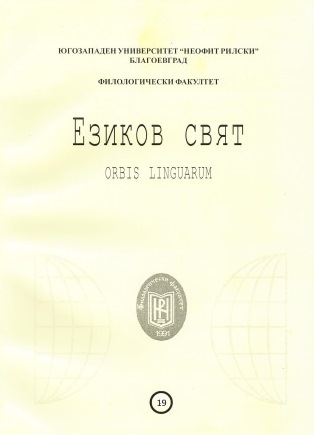IMITATIVE VOCABULARY IN THE MAADAY-KARA EPIC (YAKUT LANGUAGE TRANSLATION ANALYSIS OF THE ALTAI EPIC)
IMITATIVE VOCABULARY IN THE MAADAY-KARA EPIC (YAKUT LANGUAGE TRANSLATION ANALYSIS OF THE ALTAI EPIC)
Author(s): Eugenia ZhirkovaSubject(s): Language and Literature Studies, Philology, Translation Studies
Published by: ЮГОЗАПАДЕН УНИВЕРСИТЕТ »НЕОФИТ РИЛСКИ«
Keywords: epic; Maadai-Kara; Yakut translation; onomatopoeic words; image-imitative words; Altai language; Yakut language
Summary/Abstract: The article examines the features of the use of the Altai epic "Maadai-Kara" in the text and the translation of imitative words into the Yakut language. The aim of the study is to identify the lexical and semantic features of imitative vocabulary in epic texts in the Yakut and Altai languages, as well as some ways of translating the text of the Altai epic into the Yakut language. The analysis revealed that the epic most often uses words of onomatopoeic origin expressing the sounds and voices of animals, as well as the sounds of inanimate objects of nature. Due to the fact that image-imitative words in the Altai language are not considered a separate group, the author made an attempt to independently isolate units of this vocabulary from the text, relying on the analogy in structure and semantics of image imitative words of the Yakut language. The selected units by meaning were divided into four groups: 1) words expressing ideas about movement in a broad sense; 2) words expressing various movements performed by a person or an animal; 3) words characterizing the appearance, form; and 4) words characterizing color and light representations. The same principle of expanding the meaning of imitative words through the transition from onomatopoetic to image imitation was determined. Semantically, Altai imitative words have a broader meaning, which makes them universal. The Yakut imitative words are characterized by a narrow, concrete semantic meaning. It has also been established that when translating the Altai epic into the Yakut language, the main methods of translation were applied, concretization of the meaning, a full equivalent translation. Units that completely coincide in phonetic design and semantic meaning were found.
Journal: Езиков свят - Orbis Linguarum
- Issue Year: 19/2021
- Issue No: 1
- Page Range: 106-116
- Page Count: 11
- Language: English

